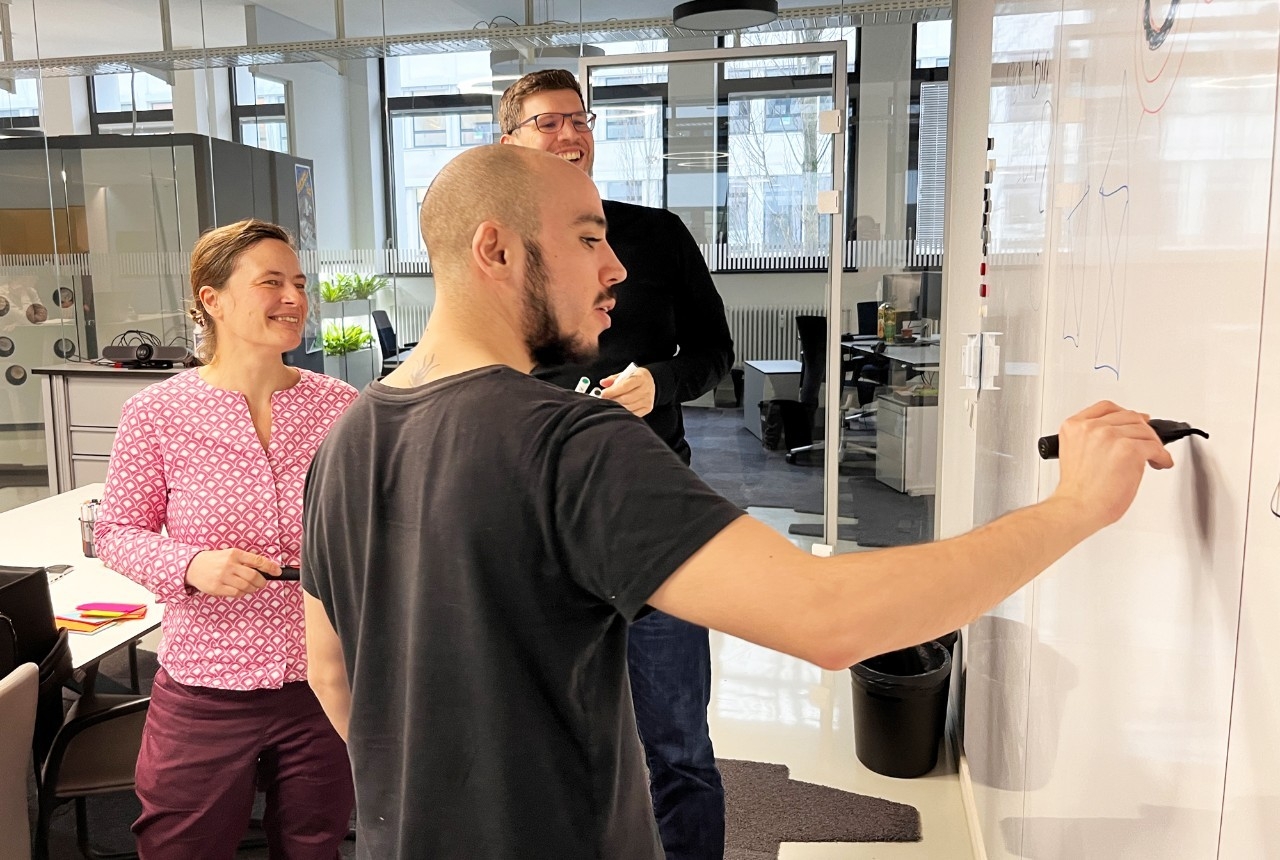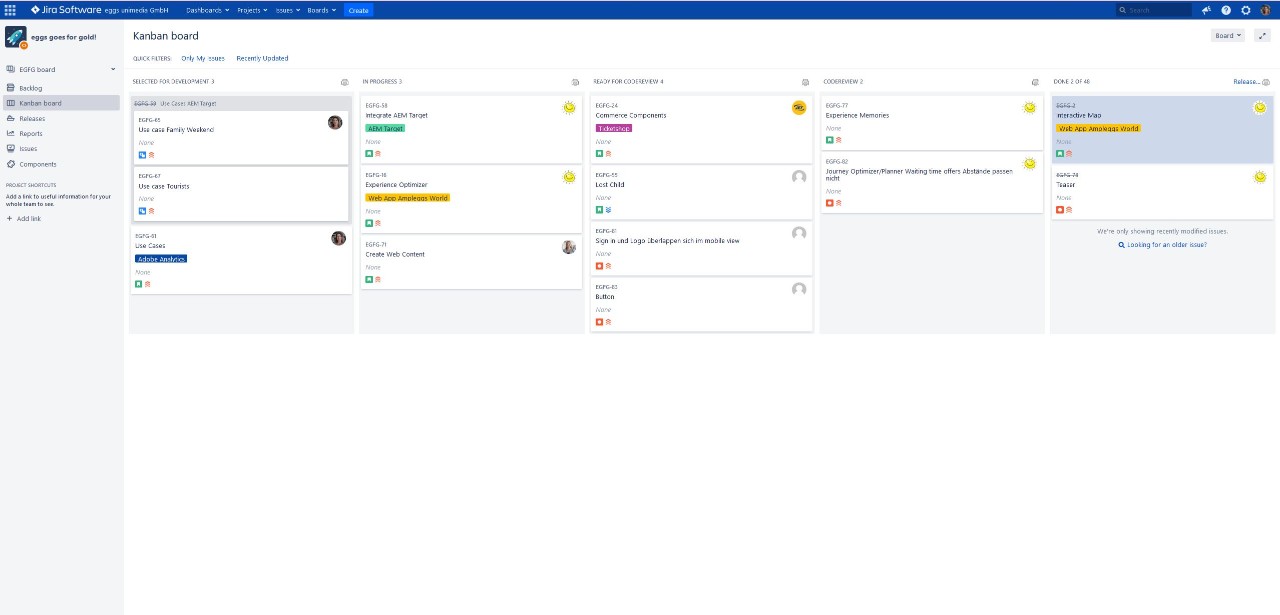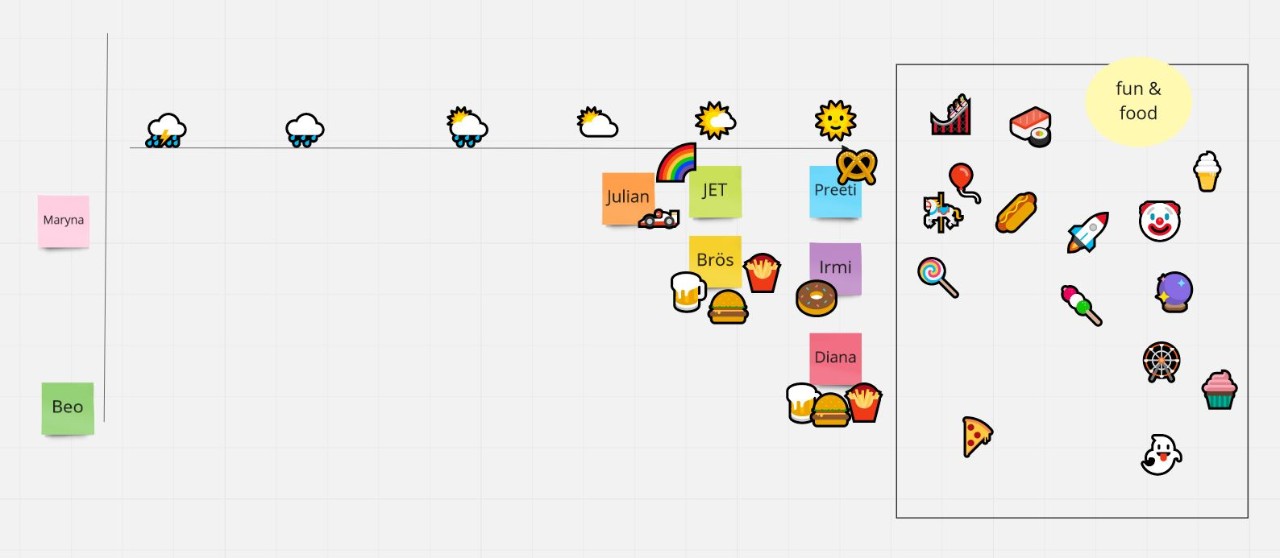From my point of view, the key point in agile work - regardless of the framework chosen - is communication. This includes both the exchange within the development team and the exchange between the development team and the client. Through regular coordination, all sides understand what is currently being done, what needs to be done next, where there are successes and difficulties. Questions from the development team can be clarified directly with the responsible person on the client's side without lengthy email ping-pong and, if possible, can be viewed directly on the example. Elements from the Scrum Framework have proven themselves for successful communication.
Daily or Weekly
We hold a daily meeting together with our contact person on the client side. This is a 15-minute meeting in the morning where all project participants are brought up to date and questions can be addressed. These are clarified by the persons involved directly or afterwards, possibly also with the involvement of other stakeholders. Depending on the project dynamics and requirements, a weekly exchange may make more sense instead of a daily meeting. We decide this together with the client.
Review
In addition to the daily exchange, a review usually takes place every two weeks. In this meeting, finished features and the current development status are presented. All stakeholders are invited to this meeting. This gives them the opportunity to give feedback directly and to clarify any questions they may have about the feedback.
Retro
Directly after the review date, a retro takes place within the development team. This is another Scrum element. The team discusses the period since the last review without involving the customer: They discuss what went well, what didn't go so well and what should be done better/differently in the next period. This involves looking at technical issues, organisation, communication flow and anything else that is on the team's mind. All issues around the project are openly expressed. The retro is a very important element in teamwork to get the opinion of all team members. The joint definition of improvement measures promotes cooperation, processes and thus also quality.




